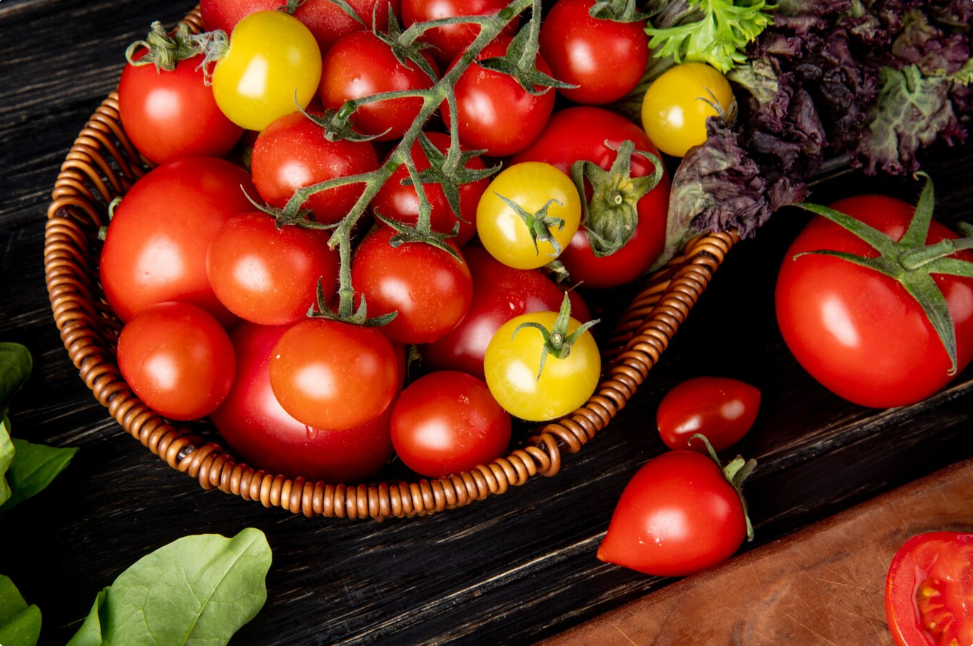A legacy of innovation, quality, and culinary experience.
Read our NewsletterFind out where to buy authentic Italian tomato sauce online, with tips on ingredients, brands, and trusted stores for genuine quality.
Italian tomato sauce is more than just a condiment; it is a cultural icon, a culinary cornerstone, and the heart of countless beloved dishes. The deep, rich flavor of authentic Italian tomato sauce brings a burst of sunshine from the Mediterranean right into your kitchen. But in today’s global marketplace, how do you ensure the tomato sauce you buy online is truly authentic and lives up to Italy’s high standards?
This detailed guide will walk you through everything you need to know about authentic Italian tomato sauce from its history and ingredients to the best online sources to buy it. By the end, you’ll be equipped to make an informed purchase and bring genuine Italian flavor to your meals.

Tomato sauce is a culinary staple around the world; it serves as a base for pasta, pizza, stews, and so much more. Among all tomato sauces, Italian versions hold a special place due to their heritage and quality. Authentic Italian tomato sauce is celebrated for its bright color, balanced acidity, and complex flavor developed through traditional cooking methods and top-quality ingredients.
One classic example is the way Pasta Ditalini Rigate perfectly captures the sauce with its ridged texture, making each bite flavorful and satisfying.
However, with many brands marketing “Italian-style” or “imported from Italy” tomato sauce online, consumers often struggle to identify genuinely authentic products. This guide is designed to cut through the noise, ensuring you can confidently select the best authentic Italian tomato sauce available online.
The journey of tomato sauce begins long before it becomes a symbol of Italian cuisine. Tomatoes originated in the Andes Mountains of South America and were unknown to Europeans before the 16th century. After Columbus’s voyages, tomatoes were introduced to Europe, but initially regarded with suspicion some thought they were poisonous!
By the 18th century, Southern Italy embraced the tomato, especially in the Campania region near Naples. There, the perfect climate and volcanic soil nurtured the San Marzano tomato, which quickly became synonymous with high-quality tomato products.
Early tomato sauces were simple crushed tomatoes simmered with garlic, olive oil, and fresh basil but over time, regional variations emerged, reflecting local tastes and ingredients. In Mediterranean cooking, grape leaves also play a significant role, often stuffed and served alongside tomato-based dishes to create balanced meals rich in tradition.
Today, tomato sauce embodies centuries of tradition and cultural pride, making it a cornerstone of Italian cooking worldwide.
Authentic Italian tomato sauce is defined by its ingredients, production methods, and cultural context:
Simple, High-Quality Ingredients: Real Italian tomato sauce contains mostly tomatoes (preferably San Marzano or Roma), olive oil, fresh basil, garlic, and sea salt. Many authentic sauces use whole peeled tomatoes as their base to preserve texture and freshness. It avoids unnecessary additives like excess sugar, preservatives, or artificial flavors.
Traditional Cooking Techniques: Slow simmering brings out the natural sweetness and deepens flavors without bitterness or excessive acidity.
Tomato Source and Variety: Authentic sauces use Italian-grown tomatoes, especially those from designated regions with unique soil and climate.
Certifications and Protected Origin: Italy’s PDO (Protected Designation of Origin) and PGI (Protected Geographical Indication) marks guarantee the sauce’s origin and traditional production methods.
Together, these factors ensure the tomato sauce delivers the full, vibrant flavor that Italian cuisine is known for.

The tomato variety profoundly impacts sauce flavor. Italy’s most prized variety for sauce is the San Marzano tomato, grown in the volcanic soil near Mount Vesuvius. These tomatoes are sweeter, less acidic, and contain fewer seeds than other varieties, making them ideal for a thick, flavorful sauce.
Other varieties commonly used include:
Roma Tomatoes: Known for their dense flesh and low moisture, perfect for sauces.
Pomodorino del Piennolo: Small, sweet cherry tomatoes from Naples, often used in specialty sauces.
Cherry Tomatoes: Occasionally incorporated for lighter, fresher sauces.
When cooking, Pasta Fusilli works wonderfully with these sauces because its twisted shape traps the sauce, enhancing the flavor in every bite. When buying tomato sauce online, always check if the brand specifies the tomato variety and region; this is a strong indicator of authenticity.

Italian tomato sauces vary widely by region and dish. Some popular traditional types include:
Pomodoro Fresco (Fresh Tomato Sauce): Simple, fresh tomatoes cooked briefly with olive oil and basil, ideal for light pasta dishes.
Sugo di Pomodoro: A classic, slow-simmered sauce made with crushed tomatoes, garlic, olive oil, and herbs.
Passata di Pomodoro: Smooth tomato puree often used as a base for more complex sauces.
Arrabbiata: A spicy tomato sauce with chili peppers and garlic.
Puttanesca: Tomato sauce with capers, olives, and anchovies.
Ragù alla Bolognese: Rich meat-based tomato sauce from Emilia-Romagna.
Marinara: Quick-cooked sauce with garlic and herbs, often served with seafood.
For a crunchy and tangy contrast, some Italian households enjoy pairing tomato dishes with dill sliced pickles or other pickled condiments to balance rich flavors. Each style reflects the local climate, ingredients, and culinary traditions knowing your preferred type helps in selecting the right sauce online.
Authenticity can often be verified by certifications and labels:
DOP (Denominazione di Origine Protetta): Ensures that every stage of production happens in a specific region, following traditional methods. For example, “Pomodoro San Marzano dell’Agro Sarnese-Nocerino DOP.”
IGP (Indicazione Geografica Protetta): Guarantees that at least one part of the production takes place in a defined geographical area.
Organic Certification: Indicates the product is made from organically farmed tomatoes without synthetic pesticides.
Look for these marks on packaging. Authentic tomato sauce is usually sold in glass jars or metal cans to preserve flavor. Plastic packaging may indicate lower quality. In many kitchens, alongside tomato sauce, classic mayonnaise or other condiments like creamy mayonnaise are staples that complement Italian meals, offering versatility for sandwiches and salads.
Italy’s geography and climate influence tomato sauce characteristics significantly:
Campania: Rich volcanic soil produces the famous San Marzano tomatoes; sauces here are simple, fresh, and vibrant.
Sicily: Tomato sauces may include capers, olives, and chili for a robust, bold flavor.
Tuscany: Lighter sauces with more herbs.
Emilia-Romagna: Hearty meat-based ragù sauces.
Liguria: Tomato sauces often blended with pesto and aromatic herbs.
Regional distinctions add exciting variety and reflect Italy’s culinary diversity. Many online sellers highlight these regional differences to help you choose.
Here are some respected brands known for authentic Italian tomato sauce:
Mutti: One of Italy’s largest and most reputable producers, famous for their San Marzano tomatoes and pure, flavorful sauces.
La Valle: Offers organic and traditionally made sauces, emphasizing natural ingredients.
Cento: Known for importing genuine Italian tomatoes and sauces to the US market.
Dell’Orto: Small-batch, artisan sauces made from traditional recipes.
Sacla: Offers a broad range of authentic Italian sauces and pesto.
To accompany your meals, many of these brands also offer beverages such as sparkling apple nectar, ideal for refreshing the palate after a hearty pasta dish. Many brands provide detailed sourcing and production information on their websites, making them reliable for online purchases.
If you're craving the rich, robust flavors of authentic Italian tomato sauce, shopping online offers a convenient way to bring a taste of Italy right to your doorstep. From traditional recipes crafted with sun-ripened tomatoes to artisanal sauces made with quality ingredients, these top online stores specialize in delivering genuine Italian tomato sauces that can transform your cooking.
Eataly specializes in authentic Italian food products sourced directly from Italy. Their tomato sauces include both artisanal and mass-market brands, all vetted for authenticity. They offer international shipping and detailed product descriptions, making it easy to shop confidently.
Amazon’s vast marketplace offers a wide variety of Italian tomato sauces. When shopping on Amazon, look for products labeled “imported from Italy” with strong customer reviews and certification marks. Beware of counterfeit or mislabeled products by checking the seller’s reputation.
Gustiamo focuses on small-producer Italian gourmet products. Their tomato sauces highlight artisan methods, organic options, and detailed origin information.
Specializing in premium Italian food, EVOO Italiano carries certified DOP tomato sauces and other gourmet Italian staples.
Many authentic Italian delis have embraced online sales, offering imported sauces curated for authenticity and freshness.
Check Origin and Ingredients: Make sure the sauce is made from Italian tomatoes with minimal ingredients.
Look for Certifications: DOP, IGP, and organic labels matter.
Read Customer Reviews: Insights on taste and quality help avoid disappointment.
Assess Packaging: Prefer glass jars or metal cans.
Compare Prices: Very cheap sauces may compromise quality.
Verify Seller Reputation: Avoid unknown or third-party sellers without strong reviews.
Check Shipping Conditions: Tomato sauce should be well-packaged to maintain freshness.
Adding creamy mayonnaise or real mayonnaise to your pantry can also complement your Italian cooking, perfect for making sandwiches or creamy dressings alongside tomato-based meals.

Store unopened jars in a cool, dark place.
Refrigerate after opening and use within a week.
Freeze leftover sauce in airtight containers for longer shelf life.
Enhance sauces with fresh herbs, a splash of good olive oil, or a pinch of chili flakes.
Pair with fresh pasta, high-quality cheeses, and Italian wines for authentic experiences.
Increasingly, consumers care about how food is produced:
Sustainable Farming: Some Italian tomato producers use environmentally friendly farming to preserve soil health.
Support for Small Producers: Buying artisan sauces supports local economies and traditional farming.
Organic and Biodynamic Options: Growing demand for organic tomato sauces free from pesticides.
Fair Trade and Ethical Certifications: Look for these labels to ensure ethical labor and environmental practices.
Enhance tomato sauce with fresh herbs, olive oil, or chili flakes. Pair with fresh pasta, cheese, and Italian wines. For added nutrition and flavor, pantry staples like Intenso beans work well in hearty tomato-based dishes.
1. How can I be sure a tomato sauce is really from Italy?
Check for certification marks, ingredient origin, and brand reputation.
2. Is canned tomato sauce as good as fresh?
Authentic canned tomato sauce (especially from San Marzano tomatoes) can be as flavorful or better than fresh, due to harvesting at peak ripeness and careful processing.
3. Can I pair tomato sauce with tuna?
Yes! Both light meat tuna and soft flakes tuna work wonderfully in tomato-based pasta dishes or salads.
Authentic Italian tomato sauce embodies centuries of tradition, the terroir of Italy’s unique tomato varieties, and the passion of generations of cooks. By understanding the history, ingredients, certifications, and where to buy, you can confidently bring this magic to your kitchen.
Shopping online offers incredible access to Italy’s finest tomato sauces just by being diligent in verifying authenticity and quality. With the right tomato sauce, every dish becomes a celebration of Italian culture and flavor.